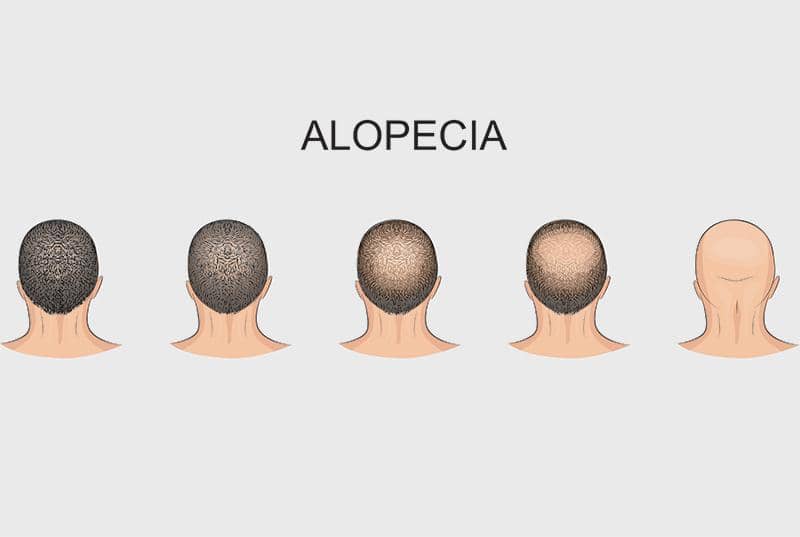Androgenetic alopecia is the most common type of hair loss in men and one of the most common in women.
Although it is considered by many to be a result of aging, in fact age is considered to play a catalytic role in relation to the action of the other two sensitivity factors, that is, the hair root to the action of the DHT hormone, but also its degenerative action itself more hormone.
The progression of this particular type of hair loss follows a progressive course starting from the front of the scalp first and the top later and gradually extending to the sides and back
The last two areas are the only ones that remain intact in most cases at least.
The progression of the above condition in men is described based on the Norwood (Hamilton-Norwood) scale.
In the 1950s, James Hamilton created a scale with seven stages through which the progressive development of male hair loss became apparent.
Later, the above scale was also revised by O’Tar Norwood.
The resulting scale is known as the Hamilton-Norwood scale or simply Norwood.
As the above scale illustrates the evolutionary course of androgenetic alopecia it becomes apparent that the more advanced the stage the greater the hair loss
It should be clarified at this point that the time duration of the transition from one stage to the next is not fixed, as the rate of dilution can vary greatly from person to person.
Thus, while in some cases the hair loss may occur gradually, in others the indiscernible thinning may last for many years and develop rapidly, leading to the final stages of the above scale in a comparatively short period of time compared to the previous development.
-
Through the stages that correspond to the levels of the above scale, the degree of hair loss is diagnosed and the appropriate treatment is chosen.
One can find many variations of male pattern baldness.
Below are the most typical ones.
Tier 1
This stage is characterized by minimal dilution which is essentially unobservable.
Thinning at this level may not refer to androgenetic alopecia but to hair loss due to aging, something for which there may be confusion in several cases.
Tier 2
This grade corresponds to a small amount of hair loss found in the frontal hairline.
Loss of hair from the central frontal line with thinning of the hair in the front part of the scalp.
Tier 3
Stage in which further retreat of the frontal line is observed with the formation of an intense M.
For the first time the effect of the dilution acquires “aesthetic significance”.
More pronounced receding of the frontal line with expansion of the area with weakened hair growth.
Hair loss at the top (crown) of the scalp.
Tier 4
At this stage there is even greater thinning of both the front hairline and the top, with a tendency for the two areas of thinning to merge.
Extension of the thinning that takes place at the front and top of the scalp with the formation of a semicircle
Tier 5
Extension of hair loss from the front and top of the scalp joining an area of thinning hair.
Merging the thinning areas of the front and top of the scalp.
Tier 6
This stage is characterized by the extension of thinning towards the side and back of the scalp.
Tier 7
Further extension of thinning laterally and posteriorly resulting in receding hair growth anywhere beyond the parietal (side) and occipital (back) regions.



